|
ID |
Nickname |
Country / City |
Languages |
Taxonomies |
Comment |
Project / Group |
Map |
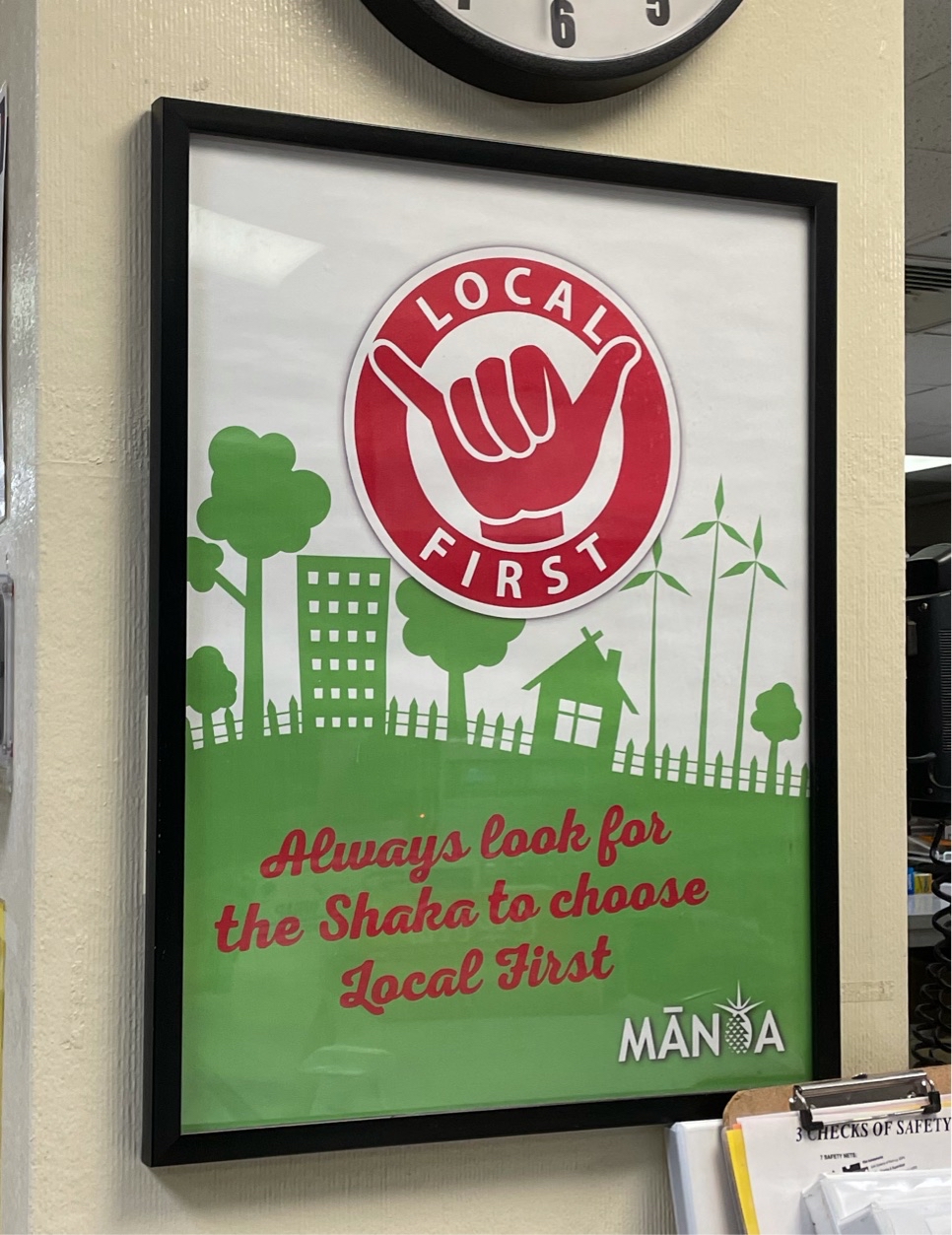
|
45869
|
|
United States
Honolulu
|
|
|
(SP) (Check in #2) This a framed semi-permanent poster visible on entrance to a student market/convenience store domain. The majority of this poster is in English, likely so that students from anywhere, even the mainland or other countries, can understand its main message easily. However, the word “Shaka” and the Shaka hand sign take up large section of the post, encouraging shoppers to look for the Shaka to know you’re buying from local sources. An iconic Pidgin word/symbol is used here to drive home the fact that circulating money back to Locals is very important, and this message would have been less impactful if they had used a non-Pidgin word, since Pidgin is often considered “the language of Locals”.
|
Multilingual Hawaiʻi
|
|

|
45870
|
|
United States
Honolulu
|
|
|
(SP)(Check in #2) this is a impermanent paper sign in the restaurant domain that contains English, Hawaiian, and Pidgin, but I am using it as a Pidgin submission. This sign is likely directed towards Locals or residents (the sign directly mentions kama'āina) who are more aware of current events in Hawai'i and want to support other Locals buy shopping locally; however, the majority of this sign is still in English so that it is as easy as possible for anyone to read it, no matter where they’re from. Hawaiian, and especially Pidgin (“da Shaka”) is used here to drive home the important of shopping Local and connect it more with the Local community, although in this case one could argue it has become more of a branding choice to appeal to readers’ desire to help Locals and Hawai'i’s economy.
|
Multilingual Hawaiʻi
|
|

|
45871
|
|
United States
Haleiwa
|
|
|
(SP) (Check in #2) this is a photo of a semi-permanent bumper sticker (taken with permission) in the domain of transportation. It’s main audience is Locals and speakers of Pidgin because “mo bettah” is likely not a phrase that non-Locals will be too familiar with. It is likely meant to show off the car owner’s pride of being from/having visited Molokai and desire to express Molokai’s excellence/superiority over other islands
|
Multilingual Hawaiʻi
|
|

|
45960
|
|
United States
Honolulu
|
|
|
(SP)(Check in #2) This Pidgin word was found on plastic bags in a student market (education/restaurant domain), it is being used here likely to catch the attention of Locals or residents who are familiar with Hawaiian cuisine and may be craving manapua. It is the largest thing on the packaging which draws your eyes towards it, making the rest of the English words on the package seem less significant and important.
|
Multilingual Hawaiʻi
|
|

|
45961
|
|
United States
Honolulu
|
|
|
(SP) (Check in #2) This is a photo of a non-permanent painted phrase “E komo mai” on the outside of a student market (educational/restaurant domain). It is mostly directed towards Locals or those who are more familiar with the Hawaiian language. It’s painted in big bright “welcome”ing letters to help the students feel more happy and at home. It is also likely meant to connect the market, and in turn the school, to Hawai'i and make it feel more Local, especially when combined with iconic Hawaiian things such as a wave and pua melia.
|
Multilingual Hawaiʻi
|
|
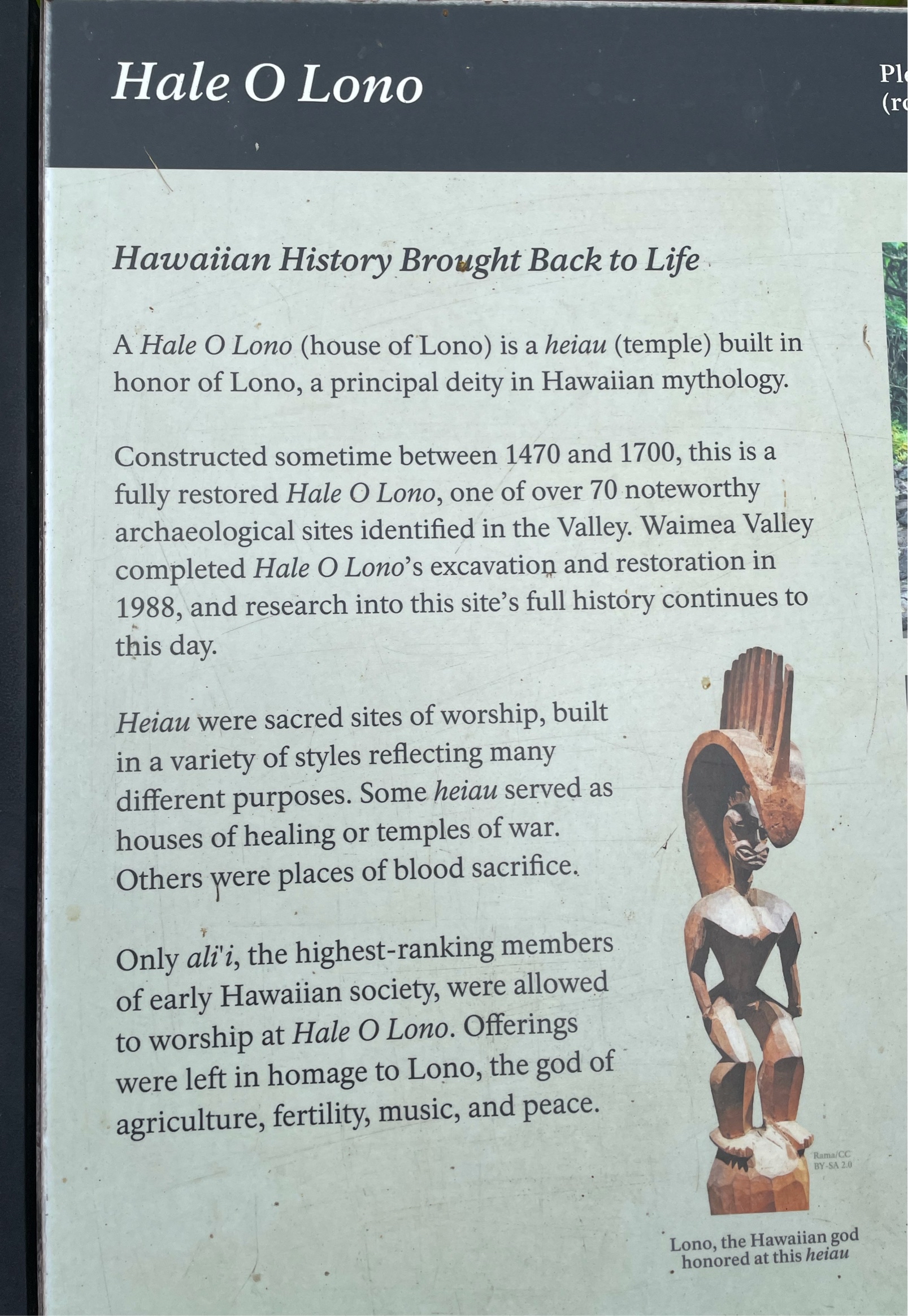
|
45963
|
|
United States
Haleiwa
|
|
|
(SP) (Check in #2) This is a permanent la informational sign found in an important park and cultural site on Oahu. The majority of the sign is written in English since this park is a population tourist location, so they want the sign to be as readable as possible for a wide range of tourists. However, many Hawaiian words are added alongside their translation to educate tourists and help them become more familiar with less known Hawaiian words that are especially important at this historical and cultural site.
|
Multilingual Hawaiʻi
|
|
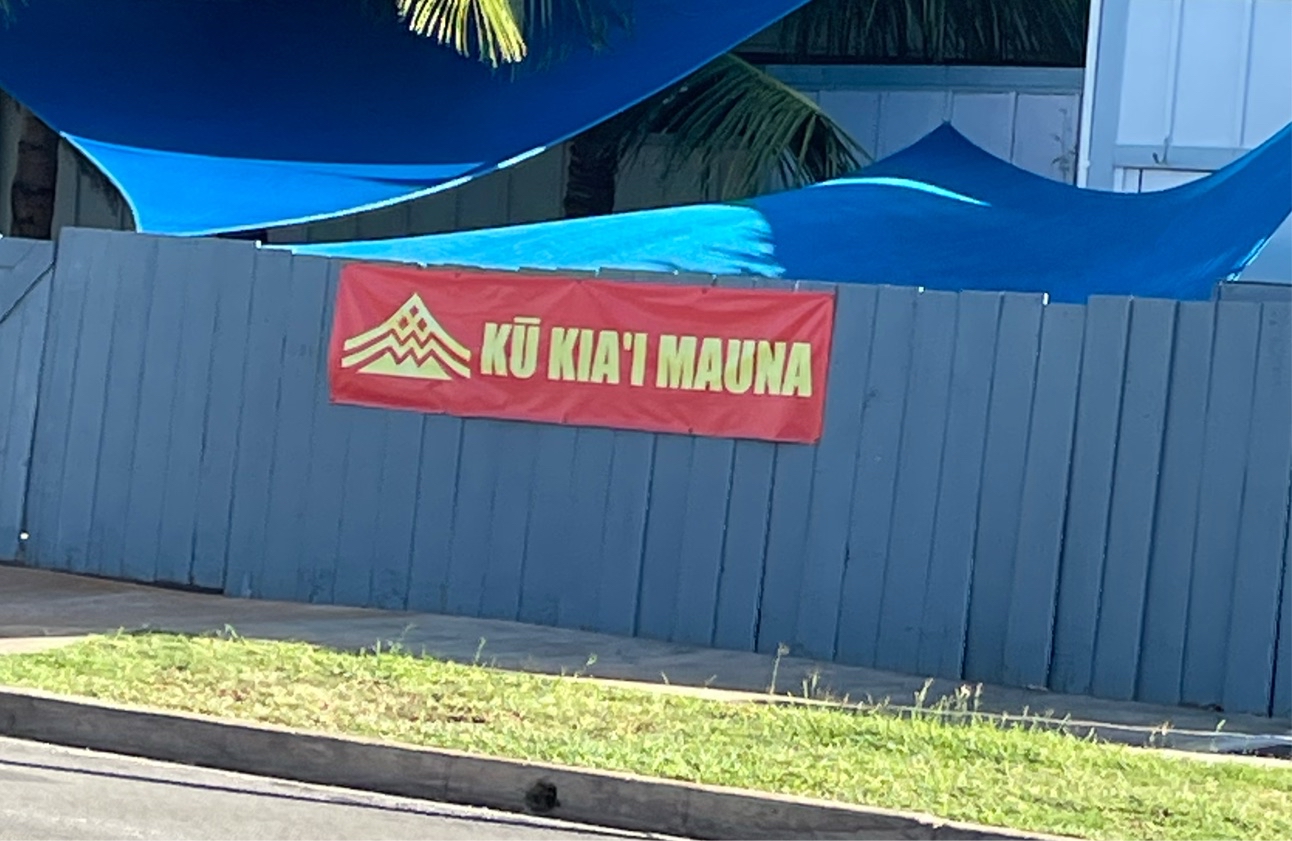
|
45964
|
|
United States
Honolulu
|
|
|
(SP) (Check in #2) This is a semi permanent vinyl banner seen outside a resident’s home (residential domain). It says “kū kia'i mauna” or “guardians of the mountain”, which is a slogan associated with the movement against the construction of an observatory on Mauna Kea. This is sign is likely directed towards Locals or residents who are familiar with current events in Hawai'i. Bright red and yellow colors are used to emphasize the issue, express their anger, and associate itself with Hawai'i’s history.
|
Multilingual Hawaiʻi
|
|

|
46032
|
|
ʻAmelika Hui Pū ʻIa
Honolulu
|
|
|
HK - This is a little product that I found in Foodland near the tourist gear/touristy items that they would buy section. This is one of their perfumes/mists products that I found. I never tried it personally myself but I can get the gist of the mist. With Heʻohu ke aloha” it can be translated as “love is like the mist.” I think that this might be a stretch of meaning, but Hawaiian can have multiple meanings and metaphors. Breaking the Hawaiian down would be, “a mist the love” although this is a rough translation. And not a perfect English, Hawaiian canʻt be translated directly to English because it wonʻt work.
|
Multilingual Hawaiʻi
|
|

|
45962
|
|
United States
Honolulu
|
|
|
(SP) (Check in #2) This is a non permanent installation of informational posters written completely in Hawaiian, found in a university library (education domain/also public health domain?). This is intended mostly for speakers of Hawaiian, although the accompanying graphics helps get the point across even for speakers of other languages. This is the first time I’ve seen important public health information provided purely in Hawaiian, so one could say that these posters were made as a sort of statement protesting the idea that only English is appropriate for official announcements like public health, since Hawaiian is an official language of Hawai'i too and should be treated as such.
|
Multilingual Hawaiʻi
|
|

|
46028
|
|
United States
Honolulu
|
|
|
SU: Check up #2
- What languages are used on the sign?: The language that is used on this sign is Hawaiian.
- How are the languages presented?:
The word “Hele” is presented in big font in all capital letters in the color white. It is presented but because it is the name of the gas station.
- Who is the audience?:
The audience is is for the general public but I think it was mainly for locals.
- What is the domain?:
The domain is at a workplace (gas station).
- What is the sign trying to tell people?:
The word “Hele” means go in Hawaiian. So I think the gas station is named “Hele” because people go there to get gas so that they can go and continue on with their journey.
- Why is Hawaiian being used here?:
Hawaiian is being used here because it is appropriate being on Hawaiian lands. It also catches the attention of the locals and nonlocals that drive past this sign.
|
Multilingual Hawaiʻi
|
|

|
46029
|
|
ʻAmelika Hui Pū ʻIa
Honolulu
|
|
|
HK - A Maunakea ʻo Kalani. A song composed for Queen Emmaʻs 1881 when she visited the mountains of Hawaiʻi, because of her love for mountain climbing, hence why she was named Ke Aliʻi piʻi kuahiwi, the mountain climbing chiefess. This does fit the place where it's at. This is found at the International market down in Waikīkī. If you look at the elevatorʻs windows, the metaphor and meaning of the song of ascending match the purpose of the elevator. This is either on purpose or for design. Although not many people recognize this song right off the bat or its meaning, especially tourists. Do you think that this is a proper place for such a song, that honors Queen Emma and her love?
|
Multilingual Hawaiʻi
|
|

|
46031
|
|
ʻAmelika Hui Pū ʻIa
Honolulu
|
|
|
HK - This is a sign that I found in Johnson Hall B, one of the dorms on campus. This picture was on the 3rd floor of the building where it captures some of the gods that we as Hawaiians pay high respect to, these 4 are essentially some of the main ones, Pele, Poliʻahu, Kanaloa, and Lono. This floor is a Hawaiian-themed floor which I find intriguing, others might not think of it much but I for one am interested in this. Especially the 4 elements being represented here with fire, snow, water, and wind. It could be translated as the 4 seasons and the 4 gods in control of it. Or it's an acknowledgment of the divine gods of the past. But I may never know because I donʻt live in that dorm.
|
Multilingual Hawaiʻi
|
|
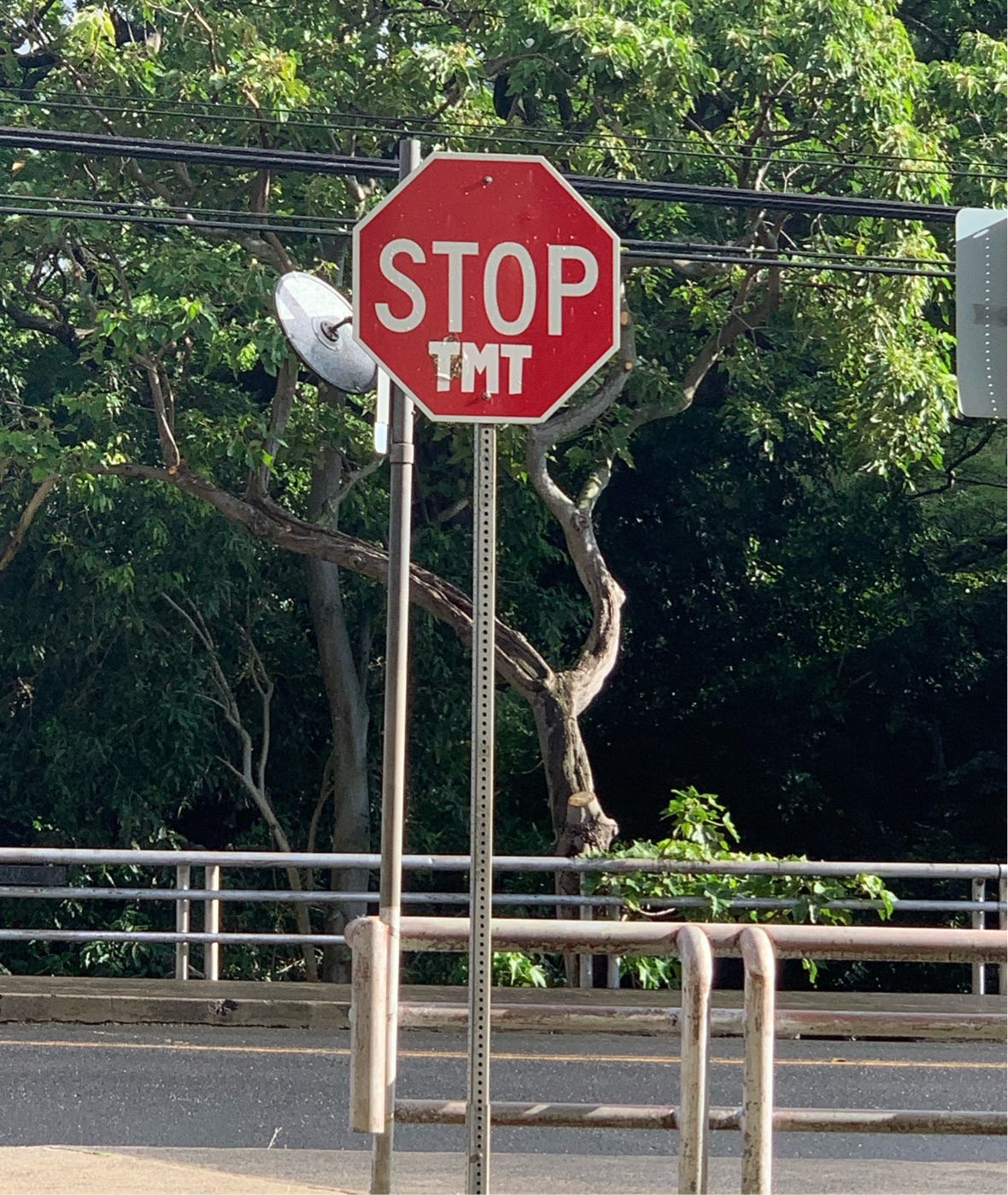
|
46033
|
|
ʻAmelika Hui Pū ʻIa
Honolulu
|
|
|
HK - This is a stop sign on Dole Street, on the side road that enters the dorms. “STOP TMT” is referring to Mauna Kea and the 30-meter telescope. This is a clear protest to stopping the construction of the telescope on Maunakea which has been a long-time protest for the Hawaiians since 2019. This is probably made by a supporter of Maunakea. This is a huge concern within the Hawaiian Community because Maunakea is a sacred place and should not be disgraced by people who just walk on it. It is an ideal place to build the telescope but already Maunakea has been desecrated by other telescopes, and Hawaiians will not stand for this any longer.
|
Multilingual Hawaiʻi
|
|
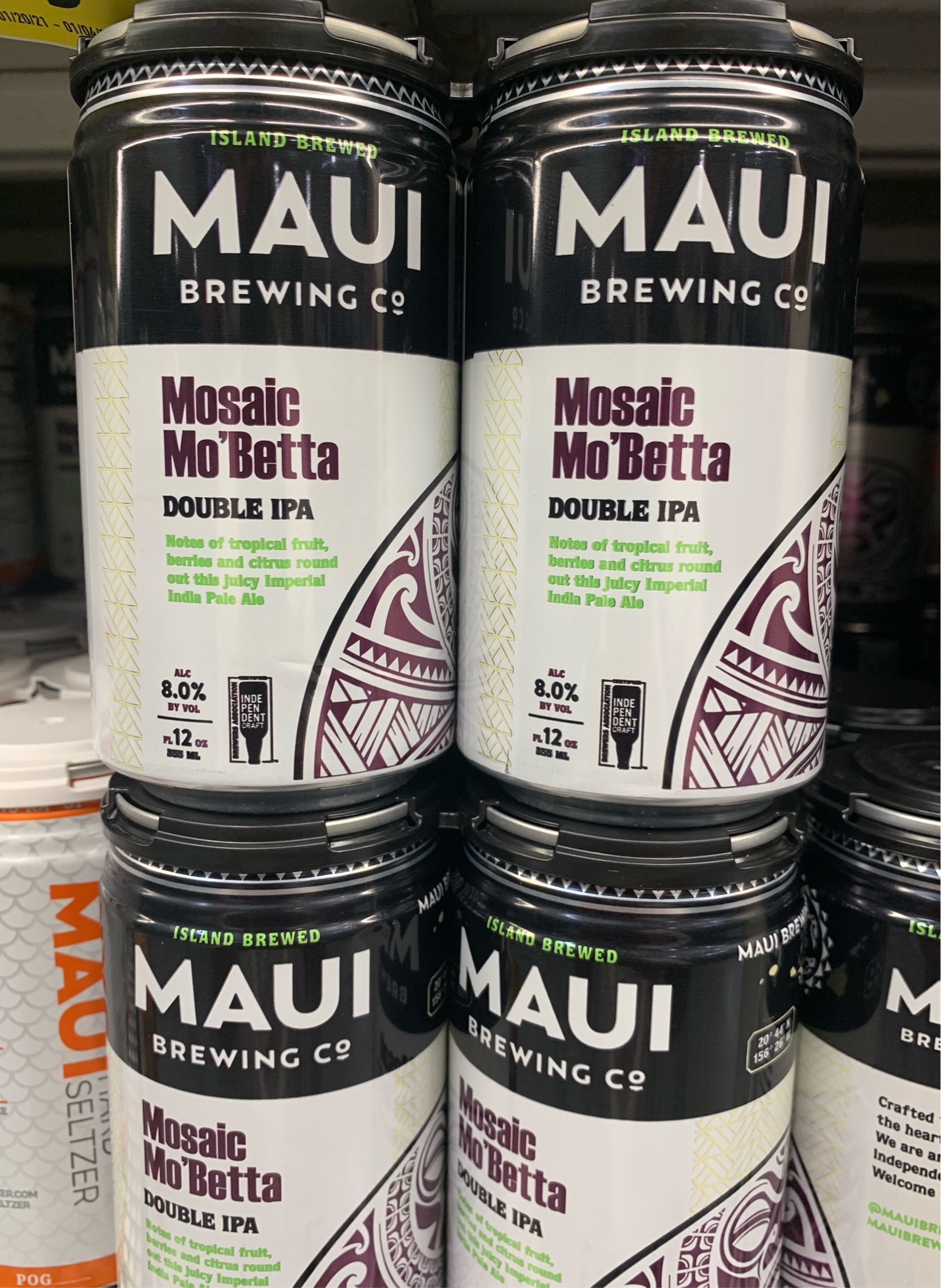
|
46034
|
|
ʻAmelika Hui Pū ʻIa
Honolulu
|
|
|
HK - Maui Brewing Co is a company that has multiple breweries around Hawaiʻi with Maui being the birthplace of it. I don't personally drink but I do see these cans around supermarkets all over Hawaiʻi. I found this case in Foodland where the flavor of the can catch my eye. “Mosaic MoʻBetta”. This is a clear use of pidgin as naming and branding being used. Mosaic the tropical and citrus taste of it, Moʻbetta is emphasizing that this beer is more better when itʻs Maui Brewing Coʻs. I find it awesome that local is doing well where it can sell multiple cases to big stores or shops. Especially the target audience is locals. Do you think that this is also doing justice to the use of Pidgin in stores?
|
Multilingual Hawaiʻi
|
|
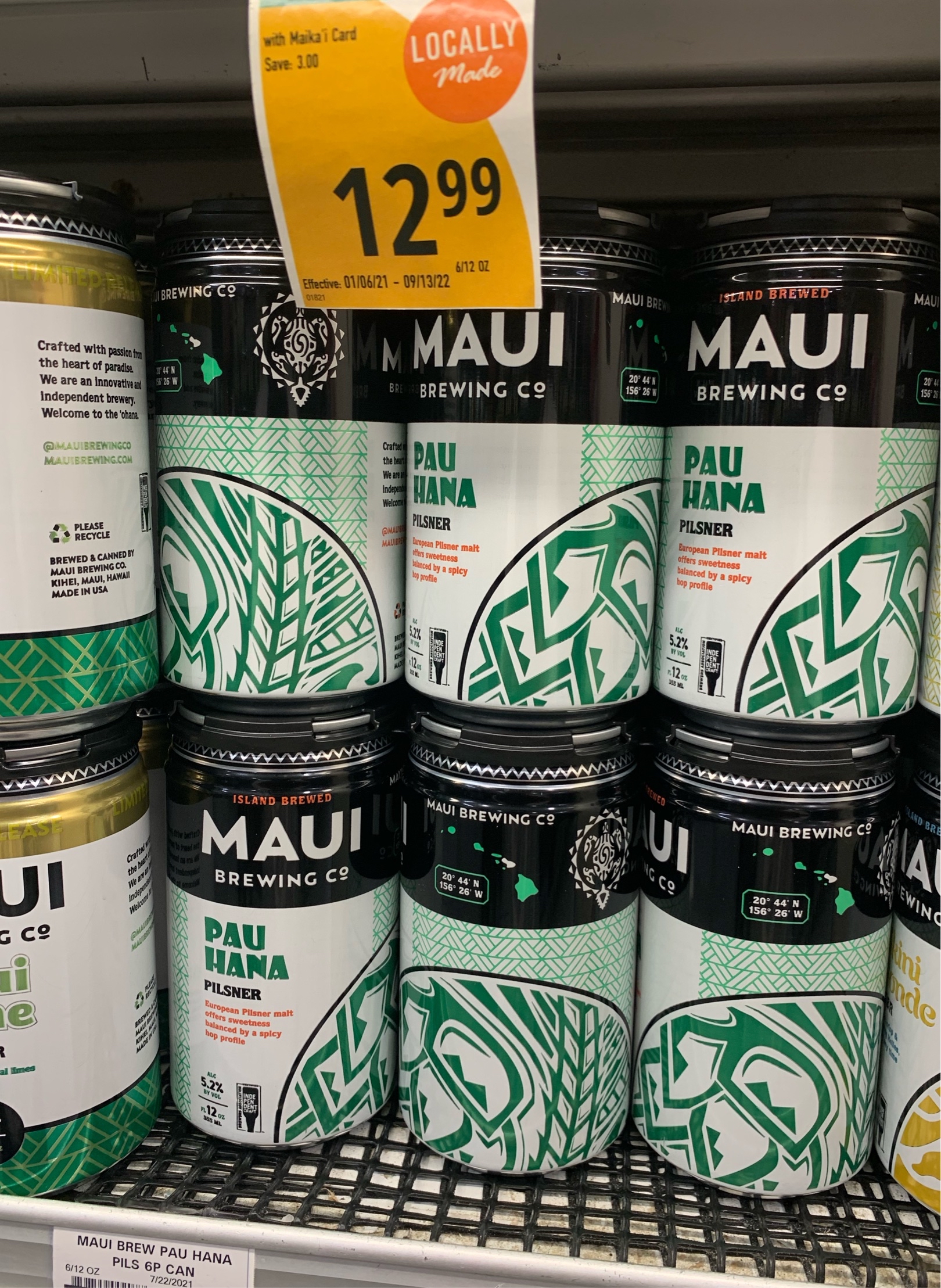
|
46035
|
|
ʻAmelika Hui Pū ʻIa
Honolulu
|
|
|
HK - This is another example of pidgin being used by the same local company. I found this at Foodland as well. Pau Hana is saying finished or done work. A simple saying but a huge relief for some people and why not take a cold one to celebrate the occasion of being finished from a long day of work that only locals could understand.
|
Multilingual Hawaiʻi
|
|
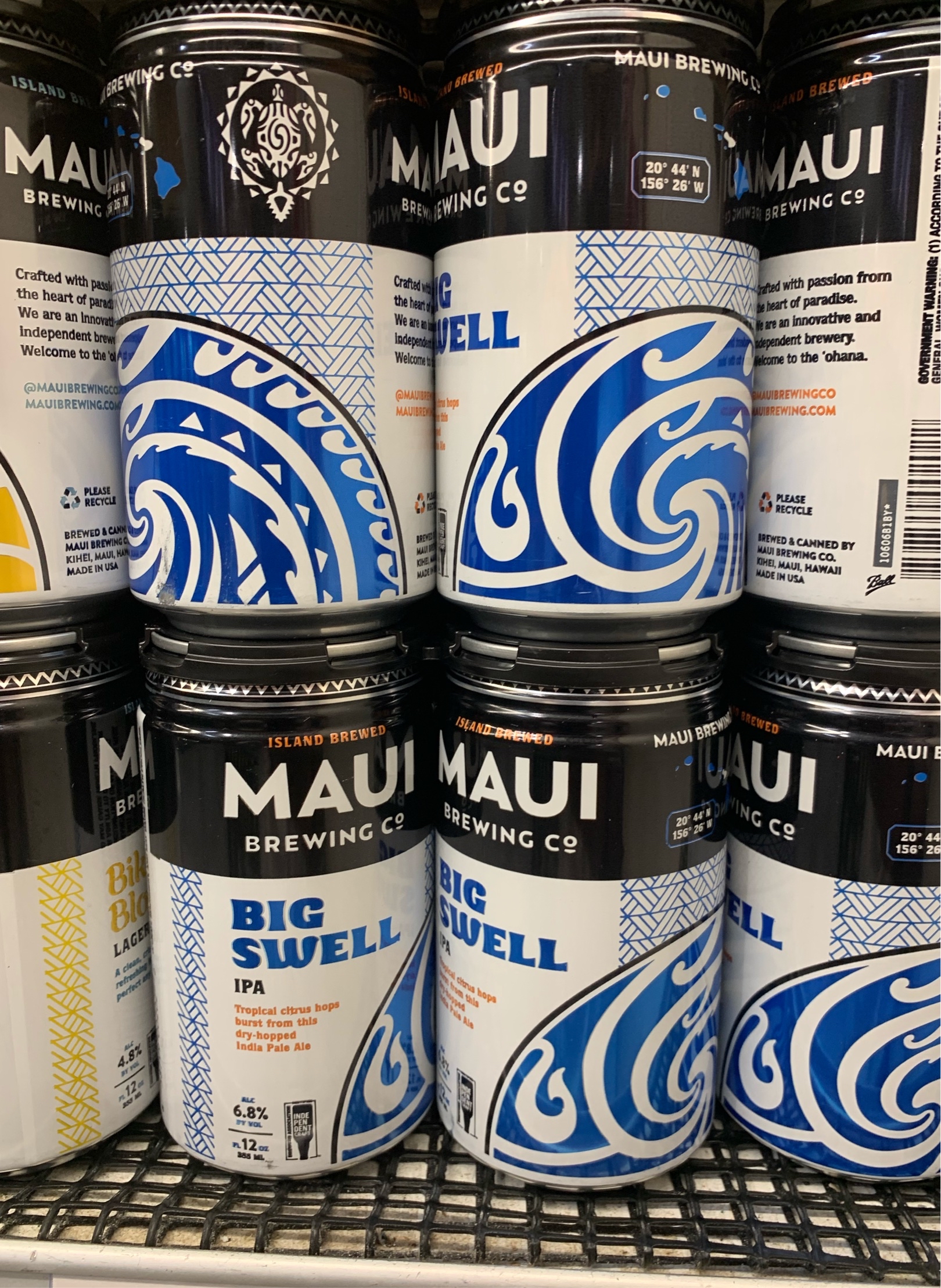
|
46036
|
|
ʻAmelika Hui Pū ʻIa
Honolulu
|
|
|
HK - This is another example of pidgin being used by the same local company. I found this at Foodland as well. Big Swell would normally refer to the waves of the ocean being picked up and it's producing some good waves to surf on. Big swell in the metaphorical way of drinking could mean, a big drunk or a swell of good beer is coming when you drink this. This may just refer to some surfers or targeted people who like to chill and relax, but locals nonetheless.
|
Multilingual Hawaiʻi
|
|
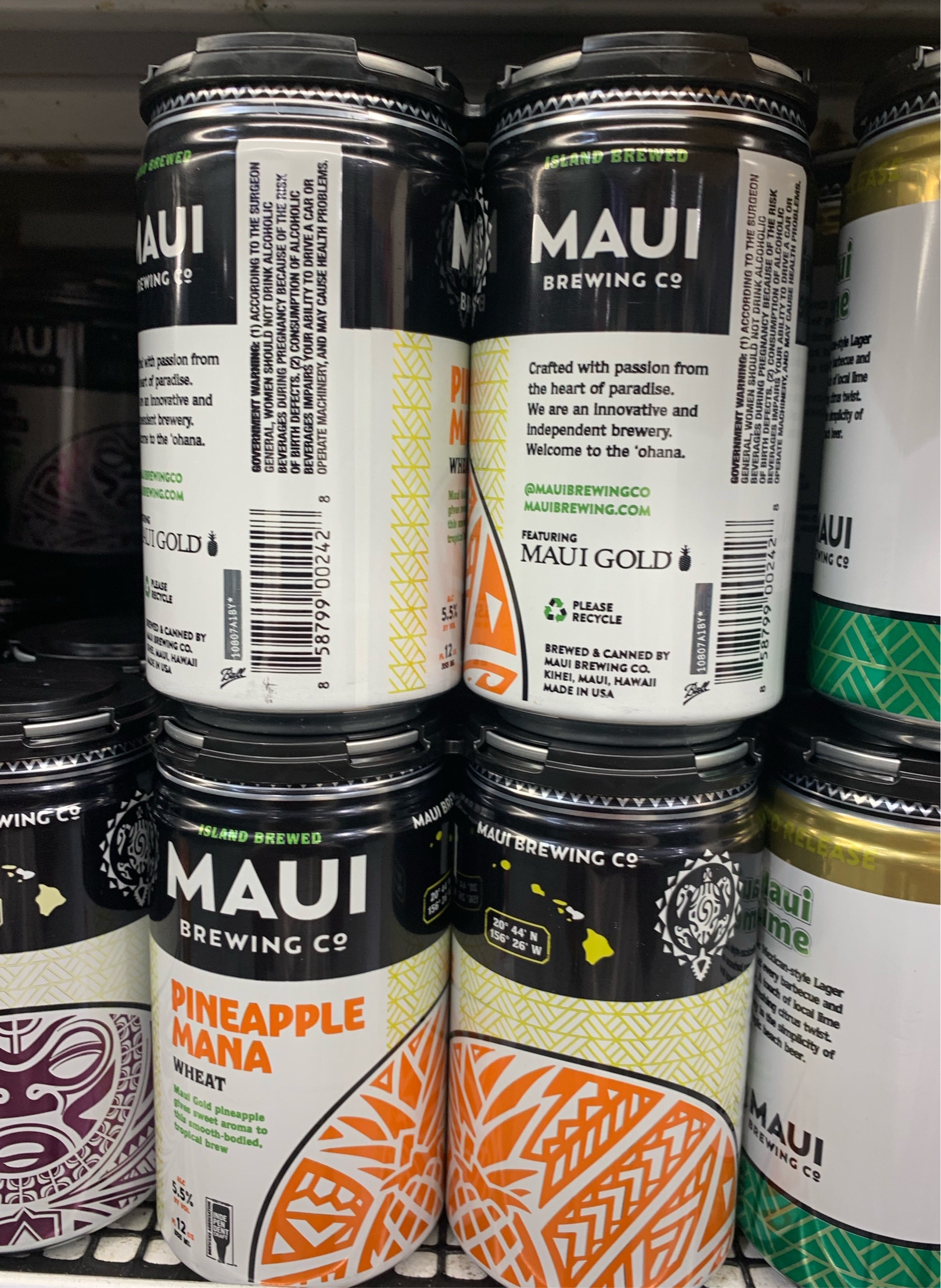
|
46037
|
|
ʻAmelika Hui Pū ʻIa
Honolulu
|
|
|
HK - Last Pidgin example of brewing examples, made by the same company, these are just some of their options here in Hawaiʻi. Pineapple Mana is the spirit or energy of Pineapple. We are saying that the purest forms of pineapple are in this flavor, captured in a can of ʻono beer. This might be a reach out to Haoleʻs who may want to try out this flavor and this company, though it may just be for locals.
|
Multilingual Hawaiʻi
|
|
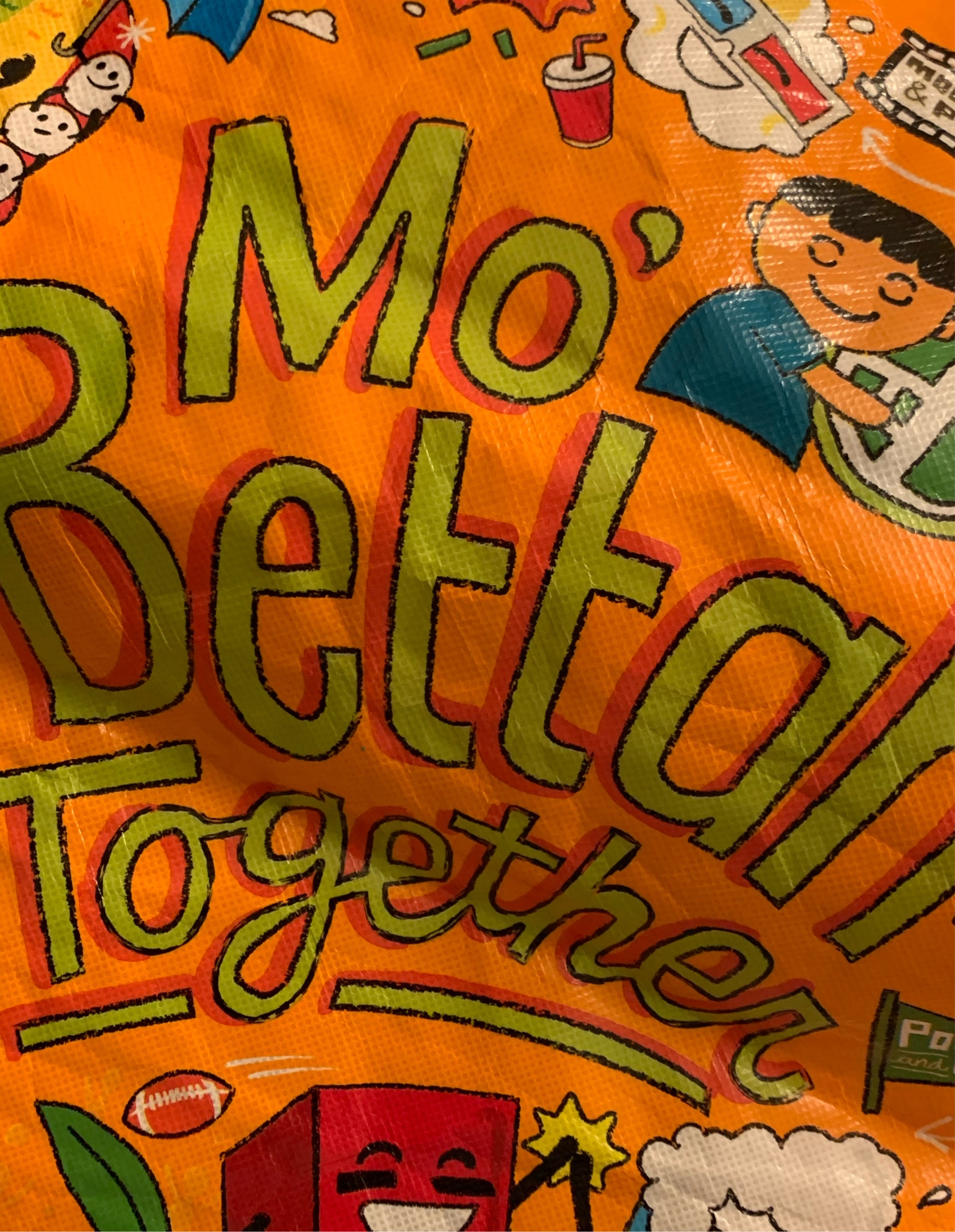
|
46056
|
|
United States
Kaneohe
|
|
|
HC
Domain: Plastic Reusable Bag Design
Purpose: Design choice of the bag
Audience: Store patrons who may purchase the bag
Print: Planet Earth Bag (tm)
Message: "Mo' Bettah" is a pidgin term to describe a noun placeholder as superior
|
Multilingual Hawaiʻi
|
|
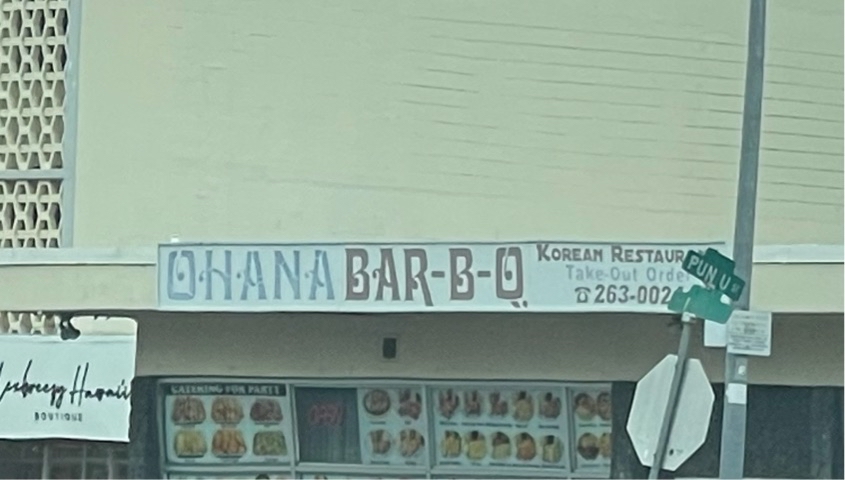
|
46039
|
|
United States
Kailua
|
|
|
SU: Check Up #2
- What languages are used on the sign?:
The languages that are used on the sign are Hawaiian & English.
- How are the languages presented?:
The Hawaiian word “Ohana” is presented in big, blue letters. The English words are presented in big and small, blue and red letters. The words “Ohana Bar-B-Q” are in big letter because that’s the name of the restaurant and the rest of the words are in a smaller font because it tells you what kind of restaurant this is and the phone number to call for a take out order.
- Who is the audience?:
The audience is the general public and could be for both locals and non-locals.
- What is the domain?:
The domain is a workplace and an eating place.
- What is the sign telling people?:
The sign is telling people that it is a Korean restaurant and since it says “Ohana Bar-B-Q”, “Ohana” means family so it might be a family owned Korean Bar-B-Q restaurant.
- Why is Hawaiian being used here?:
Hawaiian is being used here because it could easily catch the attention of the non-locals and locals alike.
|
Multilingual Hawaiʻi
|
|

|
46046
|
|
United States
Kaneohe
|
|
|
SU: Check Up #2
- What language is used on the sign?:
The language that is used on the sign is Hawaiian.
- How is the language presented?:
The language is presented in big, white letters. I think it is presented in big letters in a color that stand out to show the power of the word and how important it is.
- Who is the audience?:
The audience is the general public but it is mainly for the locals.
- What is the domain?:
The domain is on the back of a car and used as a bumper sticker.
- What is the sign trying to tell people?:
The sign is trying to tell people that maybe this person is a parent. As the word “Kia’i” means a guardian or protector. One who has the kuleana or responsibilities of the protection and preservation of a person, please or thing.
- Why is Hawaiian being used here?:
Hawaiian is being used here it is appropriate for being on Hawaiian land but also because they might be Hawaiian.
|
Multilingual Hawaiʻi
|
|